Compared to within-subjects studies between-subjects studies have shorter testing sessions. Here are a few examples of between-subjects design testing sessions categorized by the industry conducting the tests.
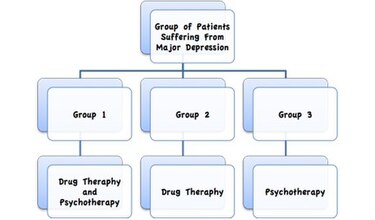
Between Group Design Wikipedia
Within-subjects designs have greater statistical power than between-subjects designs meaning that you need fewer participants in your study in order to find statistically significant effects.

. Due to the nature of the research question your participant design will be a within-subject design. In a between-subjects design people are only assigned to a single treatment. If you use a between-subjects design you would split your sample into two groups of participants.
In a within-subjects design all participants in the sampleare exposed to the same treatments. One common experimental design method is a between-subjects design which is when two or more separate groups are compared. Within-Subjects Designs Basic Within-Subjects Repeated-Measures Design.
This within-subjects design can be compared to what is known as a between-subjects design. This type of design is also referred to as a repeated measures design. 2 So one group of participants would receive one treatment while another group would receive a different treatment.
Characteristics of Within-Subjects Designs Uses a single sample of individuals and tests each individual in all treatment conditions of the experiment The ultimate equivalent groups design Often called repeated-measures design. You can use either a between-subjects or a within-subjects design. For example Lou has two groups of participants one in the 50 degree.
What does the repeated measures analysis look for. The differences between the two groups would then be compared. A within-subjects or repeated-measures design is an experimental design where all the participants receive every level of the treatment ie every independent variable.
More than 1 IV. Test participants who are assigned one website to test will be able to complete the usability test faster than those who need to test two or more websites making the between-studies approach ideal for remote usability tests. Advantages Disadvantages of Wi-Subjects Designs.
In other words measures are repeated across levels of some condition or across time points. The goal is to measure changes over time or changes resulting from different treatments for outcomes such as attitudes learning or performance. First each subject is observed repeatedly in different conditions and the same measure is used as the.
For example assume a psychiatrist is looking for new medication to treat patients with Obsessive-Compulsive Disorder OCD. For example the between-subjects version of a standard t-test requires a sample size of 128 to achieve a power of 80 whereas the within-subjects. Between-subjects versus within-subjects design Youre planning to study whether taking a nap your independent variable after a learning session can improve test scores your dependent variable.
Within-subjects ANOVA however is more general than the paired correlated-scores t-test in that it also can be used with more than two repeated measures. Another common example of a within-subjects design is medical testing where researchers try to establish whether a drug is effective or whether a placebo effect is in order. This is different than the between-subjects t-test because individuals are in both of the two comparison groups.
A within-subjects design refers to a study design where two or more measures are obtained from a sample of subjects. A between-subjects design is the opposite of a within-subjects design where each participant experiences every condition and the differences in the conditions happen within a given subject across conditions. The withinsubjects ANOVA is appropriate for repeated - measures designs eg pretest-posttest designs within-subjects experimental designs matched designs or multiple measures.
This problem is a special case of a split-plot or a between-by-within subjects design. For example in a candy taste test the researcher would want every participant to taste and rate each type of candy. Examples of between-subjects design.
The researchers in the crudest form of the test will give all of the participants the placebo for a time and monitor the results. For example one group might receive an experimental drug at four different times a control group receives a placebo and the goal is to compare the groups at time 1 at time 2 at time 3 and at time 4. Like in the previous example your experiment will most likely be composed of single or multiple reading tasks and your stimuli will be text excerpts.
Within-subjects studies are typically used for longitudinal studies as researchers can assess changes within the same group of subjects over an extended period of time. Three common circumstances lead to within-subjects designs. Within-Subjects Design In a within-subjects design subjects give responses across multiple conditions or across time.
Both Within- Between-S IVs. Explicit Memory in Amnesics vs. For example subjects can report how happy they feel when they see a sequence of positive pictures and another sequence of negative pictures.
For example assume a psychiatrist is looking for new medication to treat patients with Obsessive-Compulsive Disorder OCD. The sessions are shorter. Data collection for within-subjects design sessions takes longer because each participant is taking part in multiple treatment conditions.
Using a within-subjects design. For example math achievement of students before and after an intervention. Emilys study is an example of a within-subjects design which is sometimes called a repeated measures design.
The within-subjects or repeated measures or paired-samples t-test is a very common statistical method used to compare mean differences between two dependent groups. This type of experimental design is when one set of participants are tested more than.
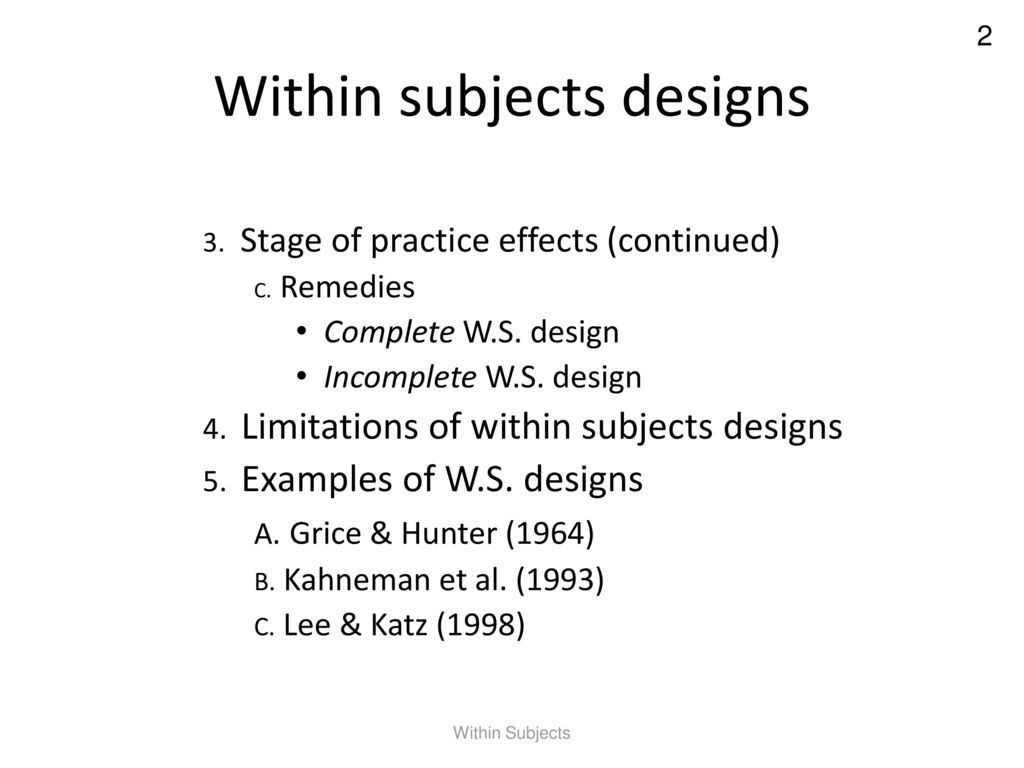
Within Subjects Designs Ppt Download
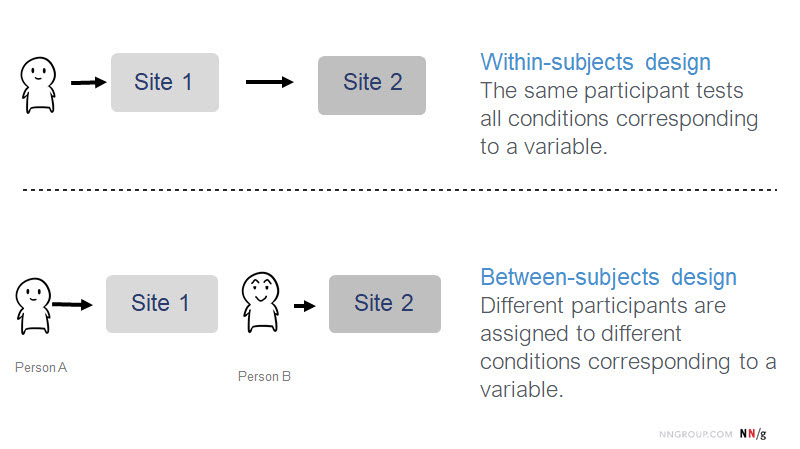
Between Subjects Vs Within Subjects Study Design
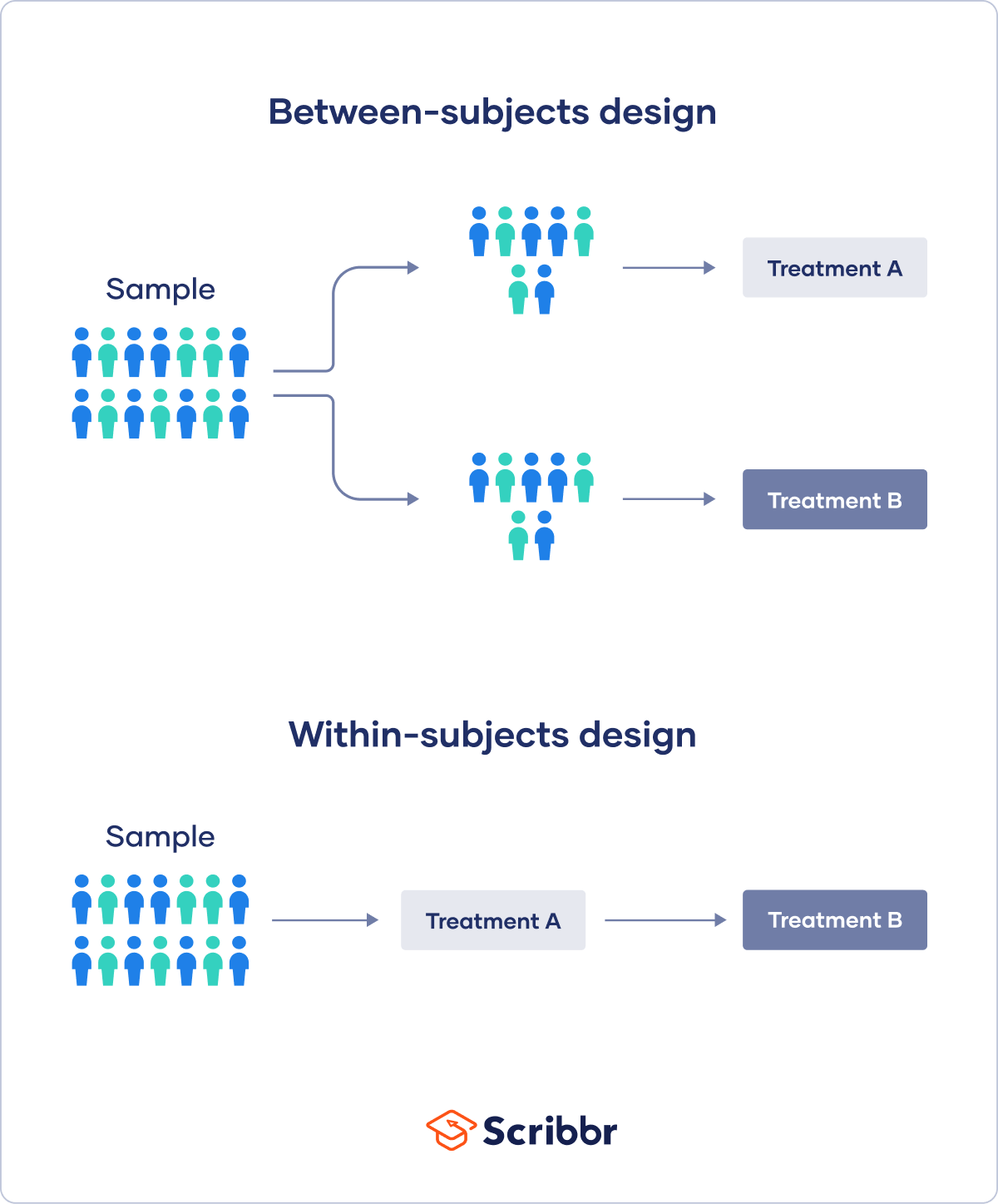
Within Subjects Design Explanation Approaches Examples

6 831 L27 Experiment Design Analysis

Within Subjects Repeated Measures Design Experimental Psychology Jove
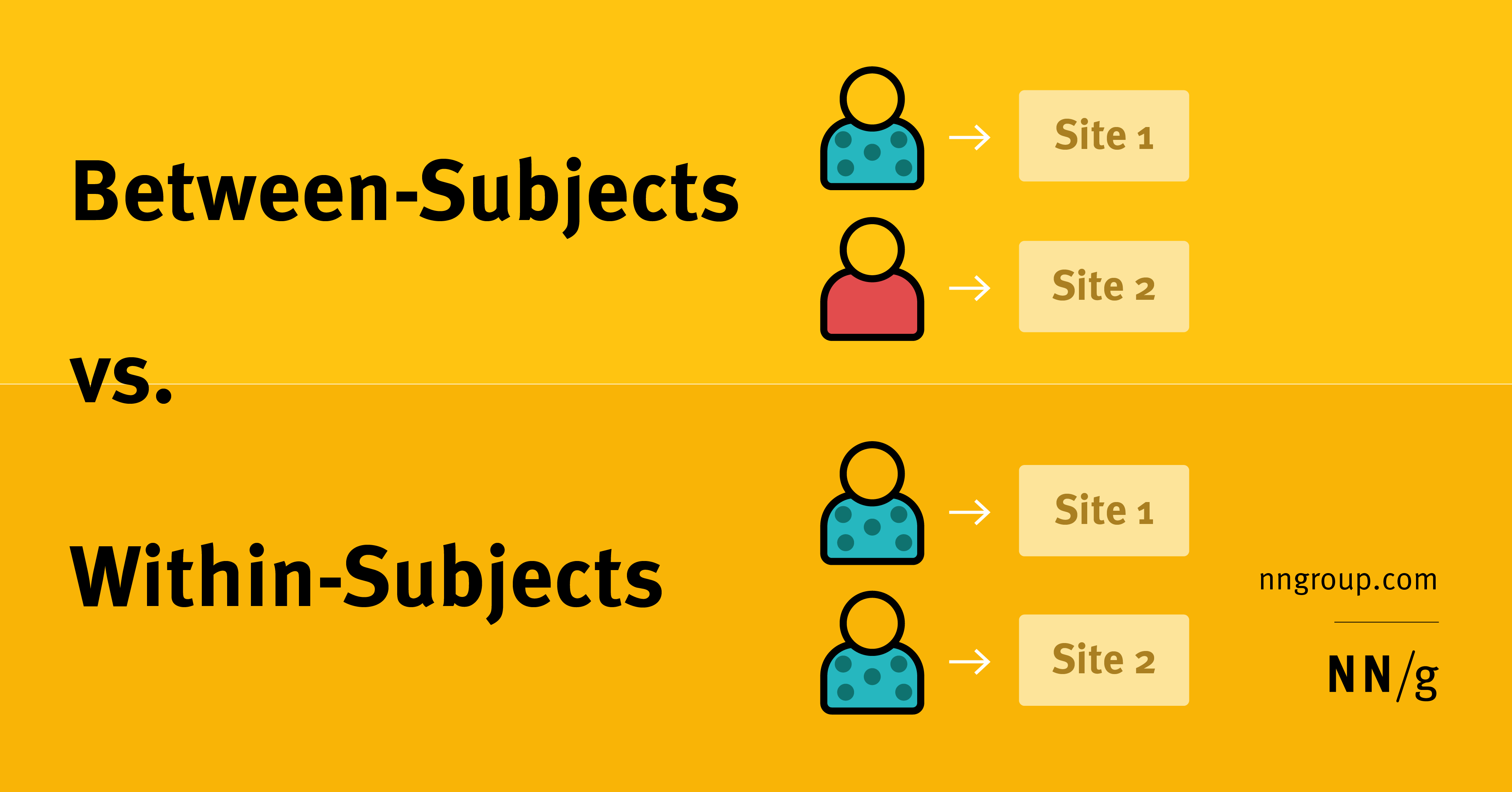
Between Subjects Vs Within Subjects Study Design

0 comments
Post a Comment